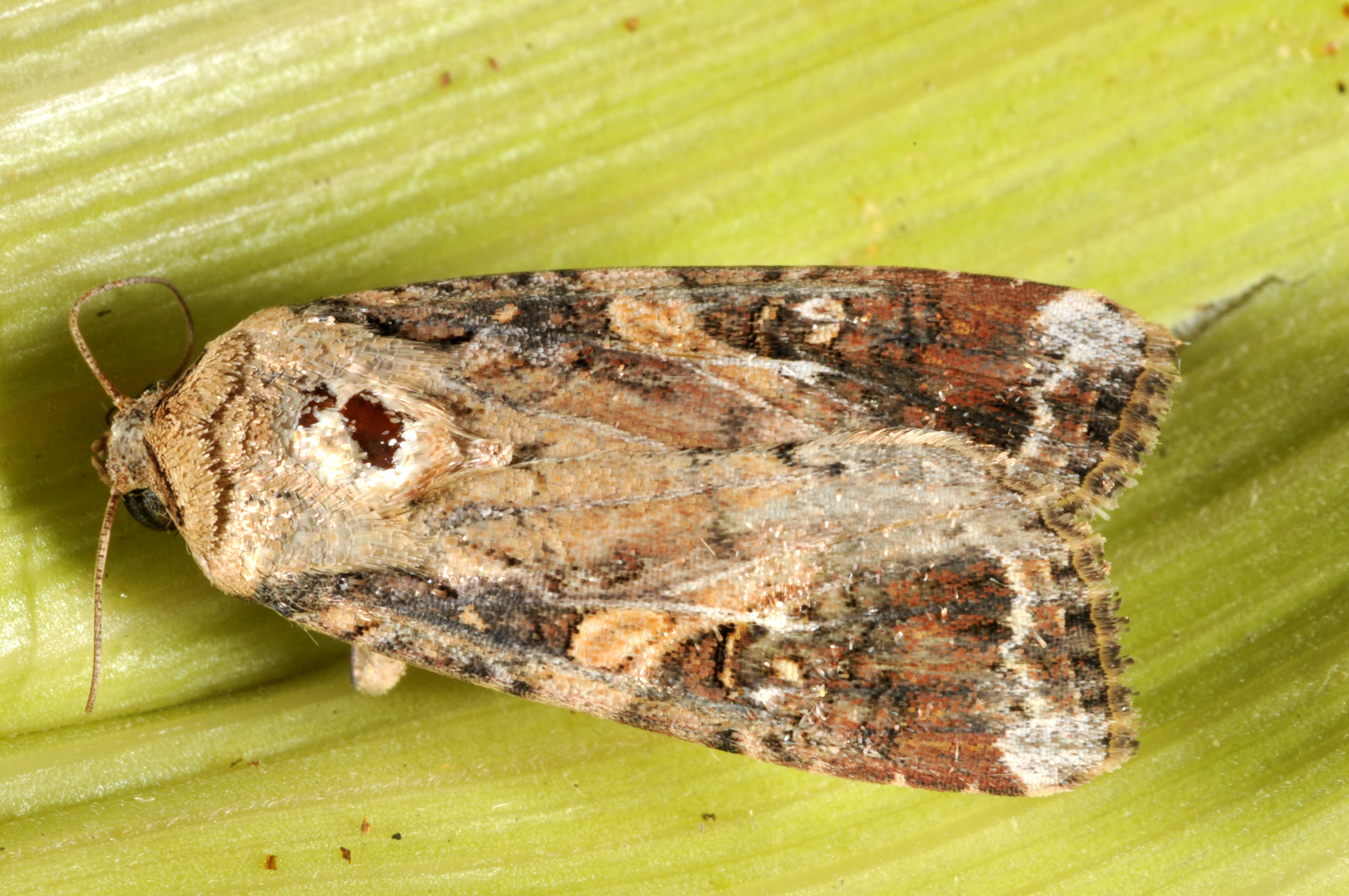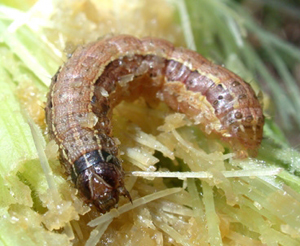Fall Armyworms (Corn)
Spodoptera frugiperda Smith
Search the Pest & Crop Newsletter
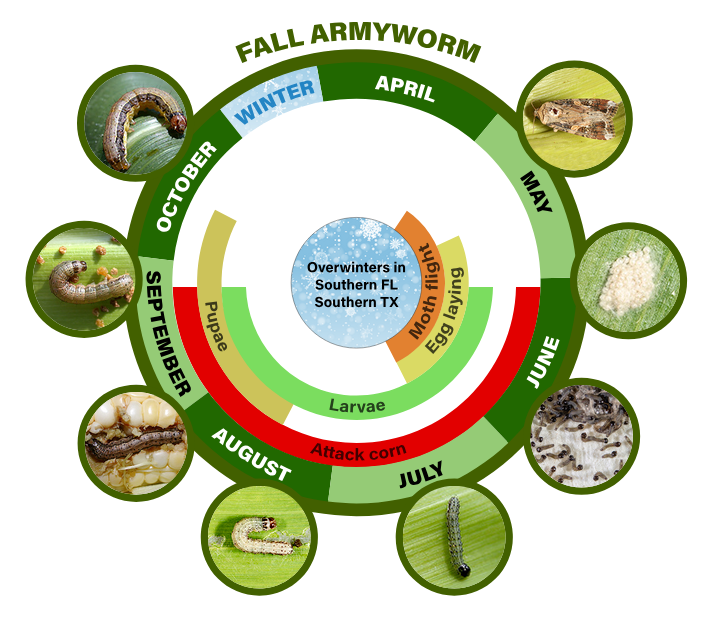
The ability to see these full-sized life-cycle images is currently disabled to resolve an issue.
Appearance and Life History
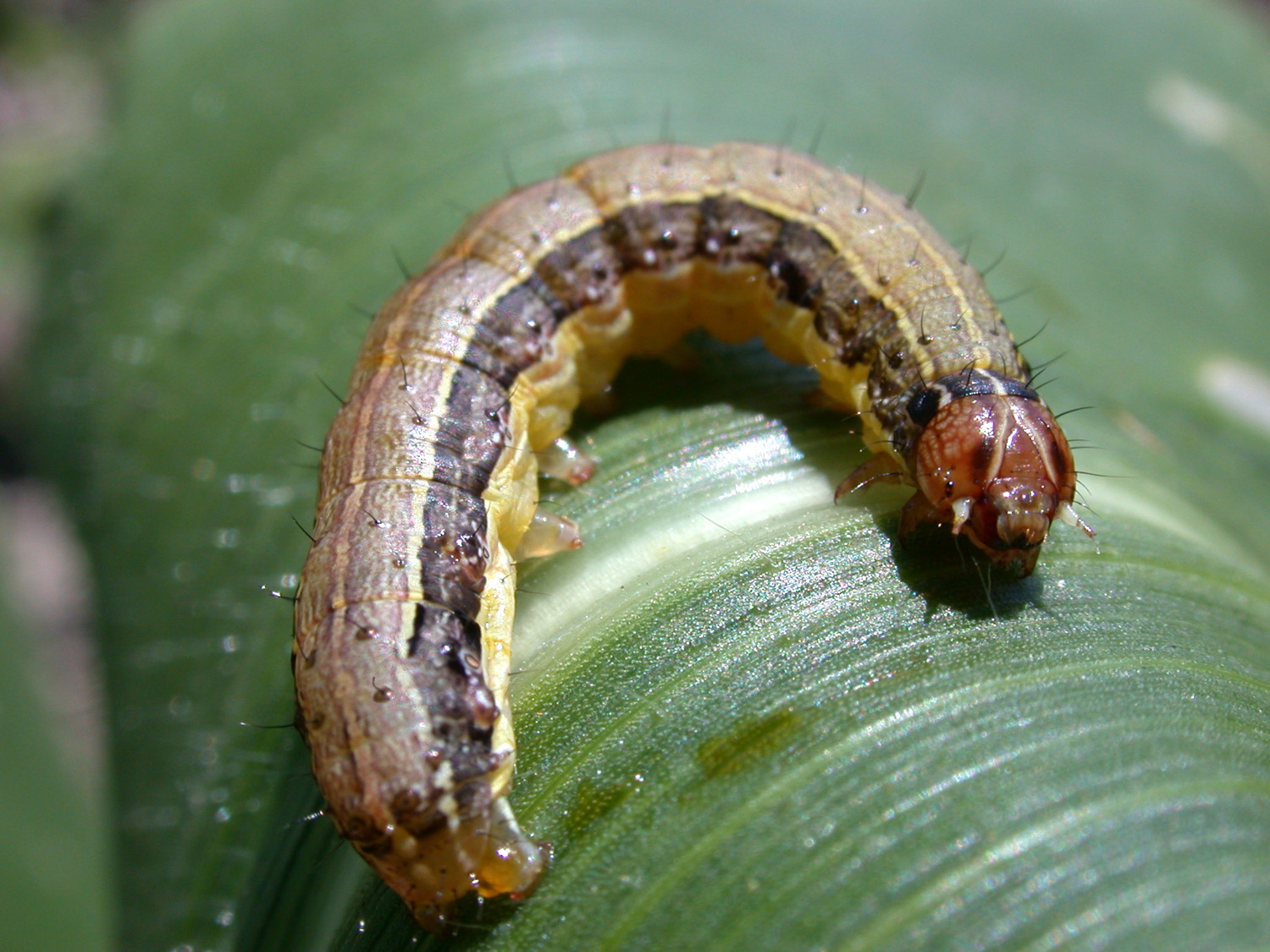
Photo by J. Obermeyer
Several species of armyworms can be found in the Midwest each year. Fall armyworm moths arrive to the Midwest later in the season and are typically attracted to extremely late planted corn, which can sustain considerable damage from this pest.
The fall armyworm moth has dark gray, mottled forewings with light and dark splotches, and a noticeable white spot near the extreme end of each. Newly hatched larvae are green in color and move in a looping motion.
Fall armyworm larvae are smooth-skinned and vary in color from light tan or green to nearly black. They have three yellow-white hairlines down their backs. On each side of their bodies and next to the yellow lines is a wider dark stripe. To differentiate this larva from other armyworm species or corn earworm, look at the head of the insect. The fall armyworm’s head has a predominant white, inverted Y-shaped suture between the eyes.
Host range is very wide, but in Indiana corn, moths are typically attracted to fields of late-maturing corn to lay their eggs. Fall armyworm, unlike armyworm, are typically found damaging corn in patches throughout a field.
Damage
Larvae feed on corn leaves and may attack the tassels and/or ears of corn. Damage appears as ragged-edged holes on leaves, tassels and/or ears. Severe feeding may give the appearance of corn that has been damaged by hail.
Sampling Method
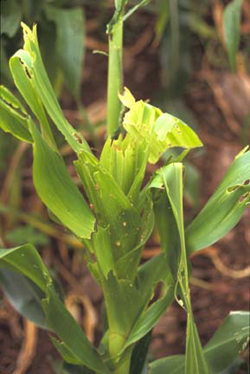
Photo by Purdue University
- Necessary only in fields where larvae or their damage are noted.
- 5 areas of a field, 20 consecutive plants
- Determine the percentage of plants damaged in the field. Note the number of larvae observed and estimate their size (length).
- Estimate the percentage of the field infested (eg., if 5 acres of a 50 acre field have larvae present, report it as 10% infested) and note the location of the infestation. Since some infestations may be outside the sample area (e.g., areas between sampling spots, border rows, waterways, etc.) with damage should be noted and evaluated.
Management Guidelines
Corn Insect Control Recommendations:
- Application of an insecticide is usually not economical for control of the fall armyworm in corn. In addition, applications when larvae are large and/or hidden in plant structures are largely ineffective
- If 75% of the plants exhibit whorl feeding damage and larvae are less than 1-1/4 inches (31 mm) long, and the plants are under stress, treatment may be advisable. If high levels of damage are noted in isolated areas of a field, spot treatments may be warranted. Consider when applying controls that fall armyworm frass (excrement) becomes so heavy that it can create a “plug” which prevents penetration of the insecticide into the whorl where the larvae may be feeding. Larvae sometimes enter ear and are invulnerable to insecticide sprays.
- It should be noted that currently (2023) most above ground traited corn is ineffective in controlling fall armyworm.

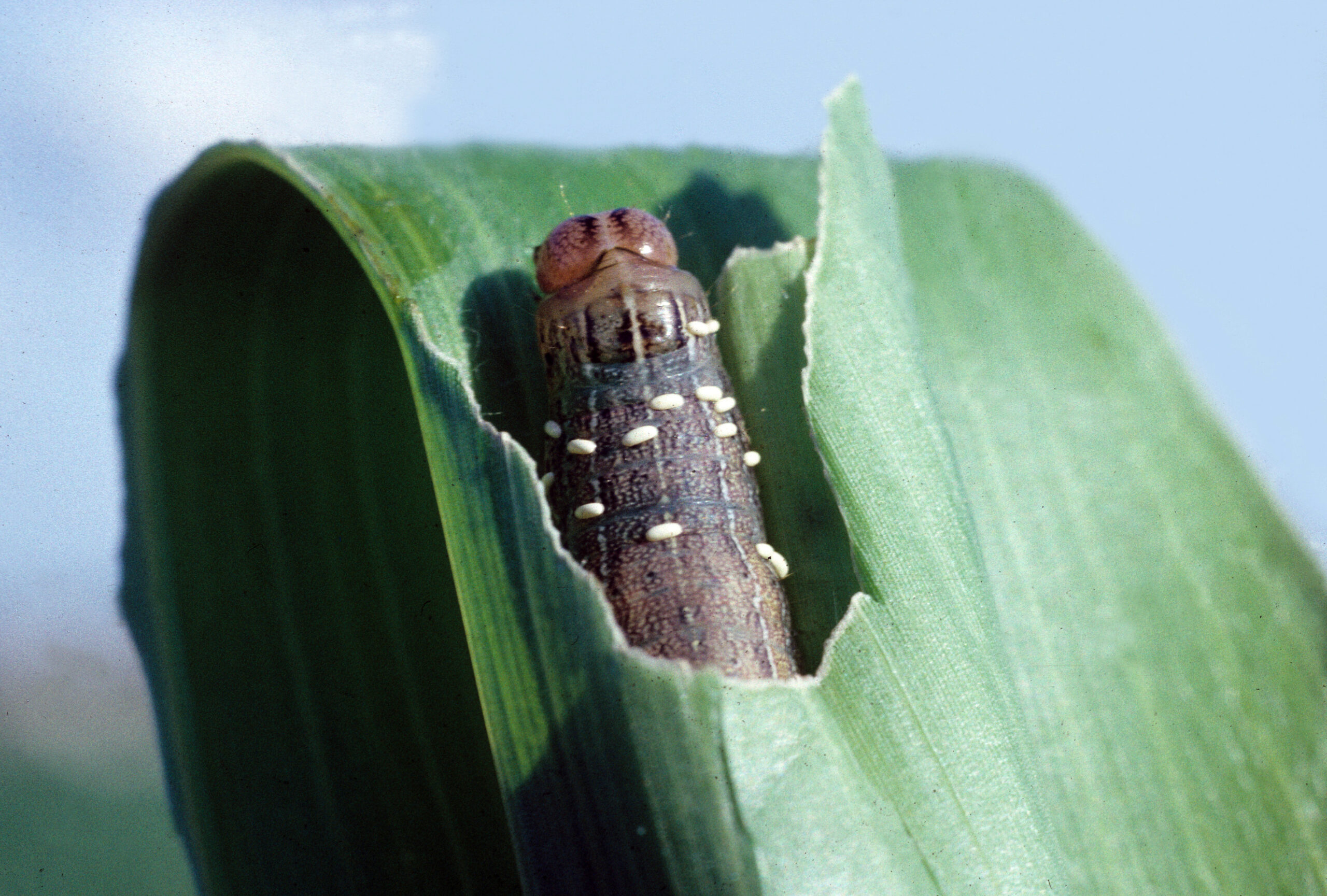
Photo by J. Obermeyer
Before treating, inspect larvae for the presence of small white “egg-shaped” structures, usually just behind the head. These are the eggs of a parasitic fly and indicate that parasitized larvae will soon stop feeding and eventually die.

